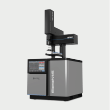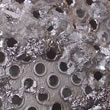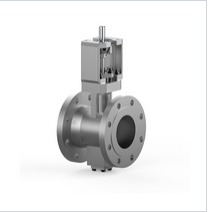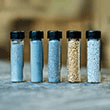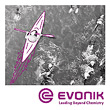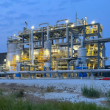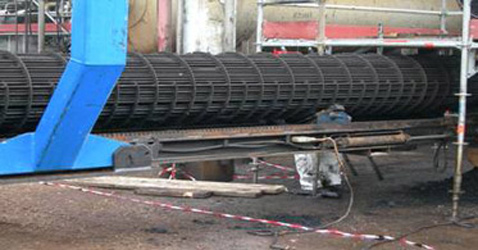Nov-2022
Rejuvenate profits and support sustainability with reused catalysts
Rejuvenated catalysts can optimise refinery margins for cat feed hydrotreating (CFH) applications.
Ioan-Teodor Trotus and Jean-Claude Adelbrecht, hte GmbH
Michael Martinez and Guillaume Vincent, Evonik
Viewed : 1661
Article Summary
Across the world, uneven refining margins despite a recovery in fuel demand, renewable fuel legislation, and strict environmental regulations on CO2 emissions strongly impact the refining industry, placing the onus on refiners’ need to optimise costs and maximise profitability. End-of-life reactor catalyst changeout is a significant and inevitable refining facility expenditure. It is also a good opportunity to make a better choice for the future by selecting the optimum catalyst to lower these costs and optimise profit. In today’s business climate, there are more cost-effective and environmentally responsible solutions than simply replacing like-for-like.
Evonik’s Excel rejuvenated cat feed hydrotreating (CFH) catalyst can help global refiners reduce operating costs and maximise profitability while remaining environmentally conscious with their hydrotreating applications, including FCC pretreating (via CFH).1
The performance of these rejuvenated catalysts was compared to their fresh counterparts in a parallel catalyst test trial conducted at hte GmbH under CFH operating conditions, using one of its high throughput units.
What are rejuvenated catalysts?
In a CFH unit, pretreating catalysts are typically replaced every one to three years, depending on unit severity. When the main bed catalyst is protected from contamination due mainly to nickel (Ni) and vanadium (V), then the CFH catalyst deactivation (over its lifetime) will mainly be due to coke deposition.
To recover or regenerate catalyst activity, coke is ex-situ removed by carefully burning it under mild oxidative conditions. This process is referred to as regeneration. During regeneration, the active sites over the catalyst may sinter or agglomerate due to exotherms, leading to a less than optimal catalyst performance. Restoration to the near-to-fresh activity of regenerated catalyst is achieved by rejuvenation.1,2,3,4 Excel rejuvenation enables catalyst metal agglomerates to be redispersed on the regenerated catalyst, restoring its activity to fresh conditions by utilising a proprietary chemical treatment.
The optimum catalyst for the CFH unit depends on feed properties, operating conditions, and product targets. Evonik offers different Excel rejuvenated catalysts systems: (1) CoMo, (2) NiMo, and (3) NiCoMo providing high activity and stable performance during the life cycle. Other sought-after benefits include:
- 50% reduction in catalyst refill cost as compared to fresh catalyst
- Faster catalyst supply compared to long lead times for fresh catalysts
- Better environmental footprint as seen with Evonik’s hydroprocessing solutions for decreasing CO2 emissions and preserving natural resources while avoiding having to transport catalyst waste to landfills
- Similar-to-equivalent performance compared to fresh catalyst in terms of activity, product yield distribution and stability.
Using Excel rejuvenated catalysts reduces CO2 emissions by approximately 6,000 kg CO2 per ton of fresh catalyst replaced (i.e., compared with fresh catalyst production), thereby significantly contributing to the circular economy.
Over the past five years, Evonik has successfully supplied over 8,500 tons of Excel rejuvenated catalyst to refineries worldwide, resulting in a saving of 51,000 tons of CO2, which would otherwise have been emitted into the atmosphere.
Independent testing
To demonstrate the robustness of Excel rejuvenated catalysts, an independent catalyst test and comparison was performed at hte GmbH — the high throughput experimentation company. In this study, different Excel rejuvenated catalyst configurations (NiMo, CoMo and NiCoMo) were compared with their parent fresh material.
These commercial catalysts are well proven for CFH applications where aromatics saturation is of key importance, as these compounds cannot be further cracked under FCC conditions. Sulphur and nitrogen removal are also important as these will ease the further steps required to upgrade the FCC gasoline and light cycle oil products up to current fuel specifications.
The test was performed in a classical X4500 trickle-bed high throughput test unit, a product line designed in-house to address the challenges of hydroprocessing applications at hte’s laboratories in Heidelberg, Germany. This state-of-the-art reactor system has consistently proven to be an outstanding tool for comparing different catalyst systems (as full-bodied extrudates) head-to-head at the same time under identical and industrial conditions.
In addition, the test unit was equipped with individually heated reactors, allowing for the testing of different reactor temperatures at the same time.5 The catalyst testing was performed at multiple temperatures with the same pressure, hydrogen-to-oil ratio, liquid hourly space velocity (LHSV), and hydrogen purity.
The performance of Excel rejuvenated catalysts has been compared with their parent fresh catalysts by loading Excel rejuvenated catalysts as standalone, as per the loadings shown in Figure 1 and Table 1.
The catalyst volume employed was 2 mL per reactor. The catalysts were tested as full-bodied extrudates, which were sorted by length to select only extrudates with a length shorter than 4 mm. The inner diameter of the reactors was 4.8 mm.
The feed, a blend of vacuum gas oil (VGO) (90 wt%) and heavy coker gas oil (HCGO) (10 wt%) from a European refinery, was used to perform catalyst testing (see Table 2). The experiments were conducted at a hydrogen partial pressure of 80-120 barg, LHSV = 1.00 h-1 and H2/Oil = 400 Nm3/m3 using three different temperatures (see Table 3).
After a dry-out step at 115°C for four hours, a common wetting and sulphiding procedure was carried out, where dimethyl disulphide (DMDS) was added (2.5 wt%) to straight-run gas oil for the catalyst activation.
The catalyst activation was followed by a line-out period and start-of-run (SOR) temperature conditions. The experiments were designed in such a way that sulphur effluents at different conditions ranged from 100 to 1000 ppmwt.
The feed for this test was carefully chosen in order to test the catalysts at very high concentrations of nitrogen and aromatics. For this reason, the gas-to-oil ratio (GTO) was kept at a relatively high level to ensure that no more than 30% of the hydrogen introduced would be consumed. This precaution was taken as a mitigation measure to alleviate the concerns of catalyst deactivation resulting from a hydrogen-starved regime.
Excel rejuvenation yielded an equivalent activity to its fresh counterpart/parent. To detect activity differences of less than 10% in a laboratory test, every aspect of the test — from reactor loading, temperature control, and equal feed distribution between reactors to product sample preparation and analyses — needs to be carried out with utmost care to minimise all possible errors. One crucial factor requiring accuracy for comparing catalyst activities is to ensure a good mass balance throughout all the experiments being compared. In this case, mass balances for all catalysts compared were in the range of 99.5 ± 1%.
Results and discussion
The fresh and Excel rejuvenated catalysts were tested in parallel at various process conditions, focusing on the following parameters after the hydrotreating reaction: hydrodesulphurisation (HDS) activity, hydrodenitrogenation (HDN) activity, aromatic saturation and volume swell, hydrogen consumption, and C5+ yield.
Sponsor:
Categories:
Add your rating:
Current Rating: 4








